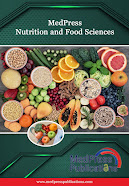Jose Luis Turabian
Citation: Turabian JL. Epidemiology of Placebo Effect. Distribution, Frequency and Determining Factors. Medp Public Health Epidemiol. 2022; 1(1): mpphe-202210003.
Abstract
Background: Although there is disagreement about the definition and clinical relevance of the placebo effect, the use of inert or non-indicated medication has been common throughout the history of medicine. There is increasing evidence that placebos are effective in clinical practice. However, knowledge of the epidemiology of the placebo effect is poorly developed.
Aim: To explore, describe and discuss the topic of epidemiology of placebo effect, in a broad way, considering multiple factors from a theoretical and contextual point of view and its impact on epidemiology. Methods: This article should be considered as a personal point of view, based on the author’s experience, plus an non-systematic or opportunistic search for information.
Results: Scientific evidence has shown that the placebo effect exists: it is a true biopsychosocial phenomenon produced by the context in which an intervention is carried out. The placebo is viewed from a different perspective in clinical trials or in clinical practice: 1. the placebo effect occurs in 100% of treatments in clinical practice; placebo effect is a part of all regular treatment. It’s not drug or placebo; it’s drug and placebo. On the other hand, many doctors admit to regularly prescribing placebos, but there are marked differences on the frequency of their use, because of the different definition criteria, but with a high prevalence that is greater than 50% in the treatment courses; 2. Numerous clinical trials have calculated the magnitude or rate of the placebo effect in different clinical conditions. The magnitude of the placebo effect ranges from an average rate of 35% in classic reviews, 62% in neuropathic pain, 40% in fibromyalgia and restless legs syndrome, 25% in patients with schizophrenia and 68% in unipolar depression.
Conclusion: It can be said that the placebo response is a complex phenomenon that has many variables; there is no single placebo effect, but rather many effects with different mechanisms, in different medical conditions, and different therapeutic interventions.
Key Words: Placebo Effect; Specific and Non-Specific Treatment Effects; Clinical Research; Controlled Clinical Trials; Epidemiology












